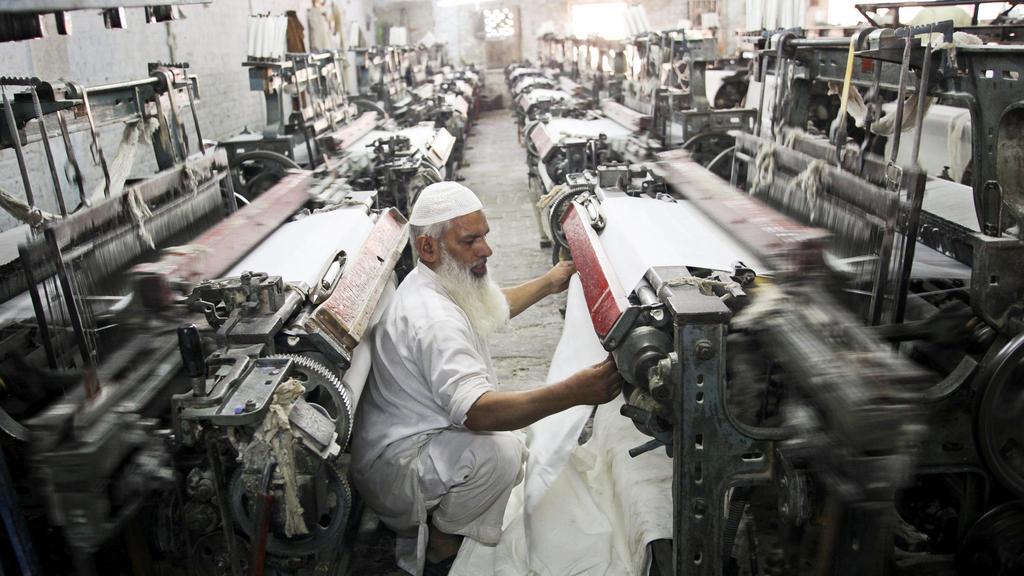China Pakistan FTA-2 : a new regional hub for cotton garments In the offing ?
Outlook India - 17 March 2020
China Pakistan FTA-2 : a new regional hub for cotton garments In the offing ?
By Nikita Singla, Priya Arora
As Coronavirus outbreak puts the globalisation into reverse and challenges existing global value chains, new supply chains continue to form behind the scenes.
In January 2020, Pakistan and China entered into the second phase of China-Pakistan Free Trade Agreement (CPFTA2), under which China has eliminated tariffs on 313 priority tariff lines of Pakistan’s export interest. In return, Pakistan has offered China market access to raw materials, intermediate goods, and machinery.
Of the 313 high-priority products that Pakistan can now export without duty payments to China, 130 are from textiles and clothing sector. Reduced tariffs, an expected surge in Chinese investment into Pakistan and the potential shift of production base from China to Pakistan, may change the regional dynamics of textiles trade. The numbers explain how.
Under the CPFTA2, many Pakistani textile products will now enjoy duty-free access to China, which has extended similar tariff reductions to other trading partners - Bangladesh, Thailand and Vietnam among others - under the ASEAN-China FTA. Tariffs on readymade cotton garments (HS codes 61, 62 and 63), have been massively reduced. For example, men’s ensembles of cotton (HS code – 62032200), Pakistan’s top world export, was traded with China at 17.5 per cent (MFN rate) which reduced to 12 per cent under Phase-I of FTA and has dropped to 0 per cent in the Phase-II of FTA. This places Pakistan at a more than equal footing with Bangladesh, and ahead of India which faces a tariff rate of 8 per cent on the export of this product to China.
With the second phase of the CPFTA, there is a possibility of relocating the production of international brands, many of which have facilities in China that import cotton fabric from Pakistan as raw material—to Pakistan itself. The inflow of Chinese investment in machinery and technology in order to set up production bases in Pakistan will drive innovation and economies of scale, thereby making Pakistan regionally competitive in cotton-based garments. In addition, Pakistan will garner a favourable position for exporting to other markets that have so far been trading primarily with China as well as potentially to other Regional Comprehensive Economic Partnership (RCEP) members.
Pakistan is likely to be preferred over Bangladesh given the former country’s comparative advantage in producing cotton fabric (nearly 25 per cent of Pakistan’s total cotton exports in 2018 were to China) ; ease of doing business (Pakistan ranks at 108 compared to Bangladesh at 168 and India at 63 under the World Bank’s Doing Business 2020 study) ; ease of trading across borders (Pakistan ranks at 111 compared to Bangladesh at 176 and India at 68) and ease of starting a new business (Pakistan ranks at 72 compared to Bangladesh at 131 and India at 136).
Pakistan’s government targets raising the country’s textile and clothing exports from USD 13.5 billion in 2018 to USD 25 billion by 2025. As China has the world’s largest textile industry—in terms of both production and export—it is an inevitable trading partner for Pakistan to meet this 2025 target.
For Pakistan, to fully reap the benefits of the CPFTA2, access to cheaper imported inputs will be crucial to its export competitiveness for cotton-based readymade garments.
While Pakistan grows cotton domestically, 37 percent of its cotton imports came from India. After the trade ban between India and Pakistan in 2019, Pakistan began sourcing cotton/yarn from the US and Vietnam, thereby witnessing a rise in cotton prices, amid low production and higher import tariffs (11% from the US and Vietnam, compared to 5 per cent from India for cotton yarn (HS Code 520524), one of Pakistan’s major imports from India).
Pricier cotton can hurt Pakistan’s competitiveness in cotton-based readymade garments. Our side of the world has already experienced the competitiveness of Pakistani designers and manufacturers, as their cotton suits swept the markets of India and others like the UK, the UAE and Malaysia.
The period from 2009 to 2015 witnessed an increase in direct export of cotton suits from Pakistan to India that peaked in 2015 at USD 247,800 from USD 4,100 in 2009. The growing appetite for Pakistani designs and styles in India also led to the development of a huge parallel industry in India, where manufacturers in Surat, Gujarat took inspiration from the Pakistani designs and patterns and replicated them on to the domestically produced fabrics.
India’s markets got flooded with Pakistani cotton suits – both originals and first copies - for tag-conscious and price-conscious customers respectively. Since the India-Pakistan trade ban in 2019, the supply of these Pakistan-made garments was once again re-routed via Dubai ; India imported USD 68,100 of cotton suits via the UAE in 2019, jumping significantly from USD 3,600 in 2018.
While pricier cotton ultimately impacts the consumers of cotton-based garments, re-routing via third country pushes the prices further up. Despite this, the Dubai-angled triangle for trade between India and Pakistan continues to exist as the mechanisms of indirect trade remain more organized than those of direct trade.
The question is what an agreement like CPFTA2 can lead to, given the current circumstances. There can be two scenarios – one, shifting away to sourcing raw material via routes that are not as cost-effective, could hurt Pakistan’s export competitiveness vis-à-vis other trading partners, like China in this case, or two, Pakistan, despite the disruption of cotton supply from India, could manage to produce/source cotton at competitive prices, and emerge as a regional hub for cotton-based garments. The latter is just as likely, if not more.






